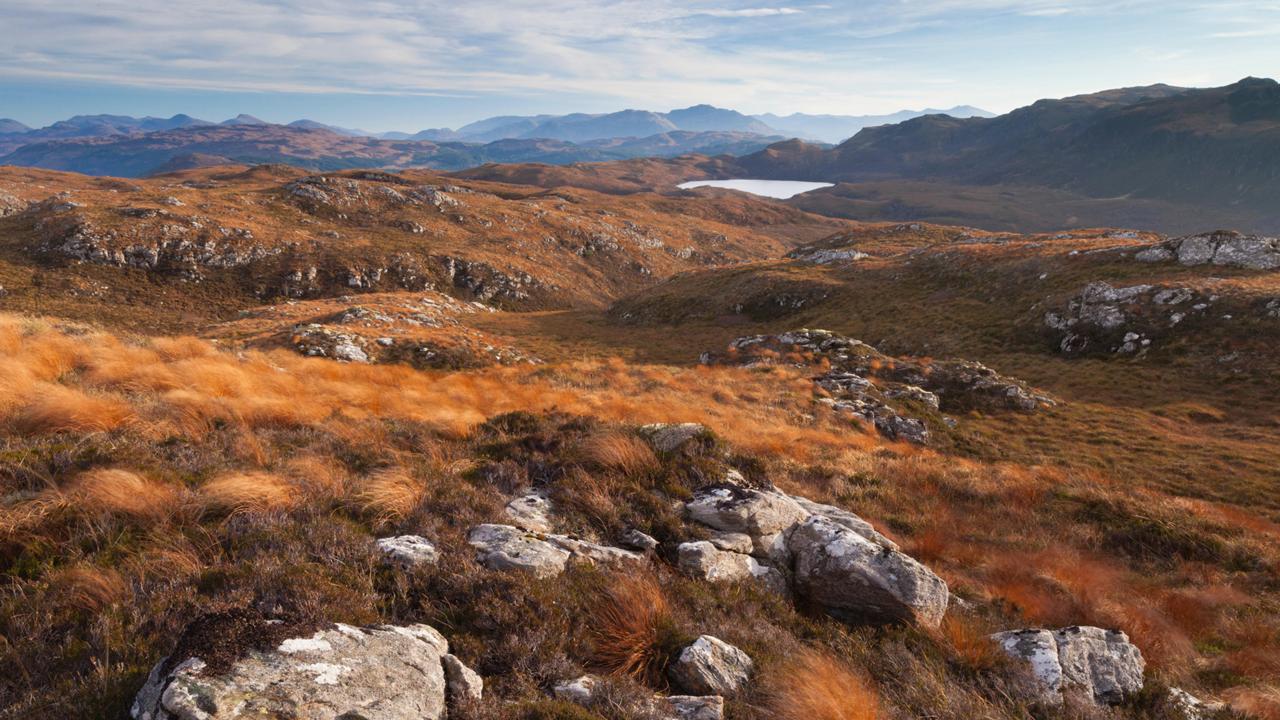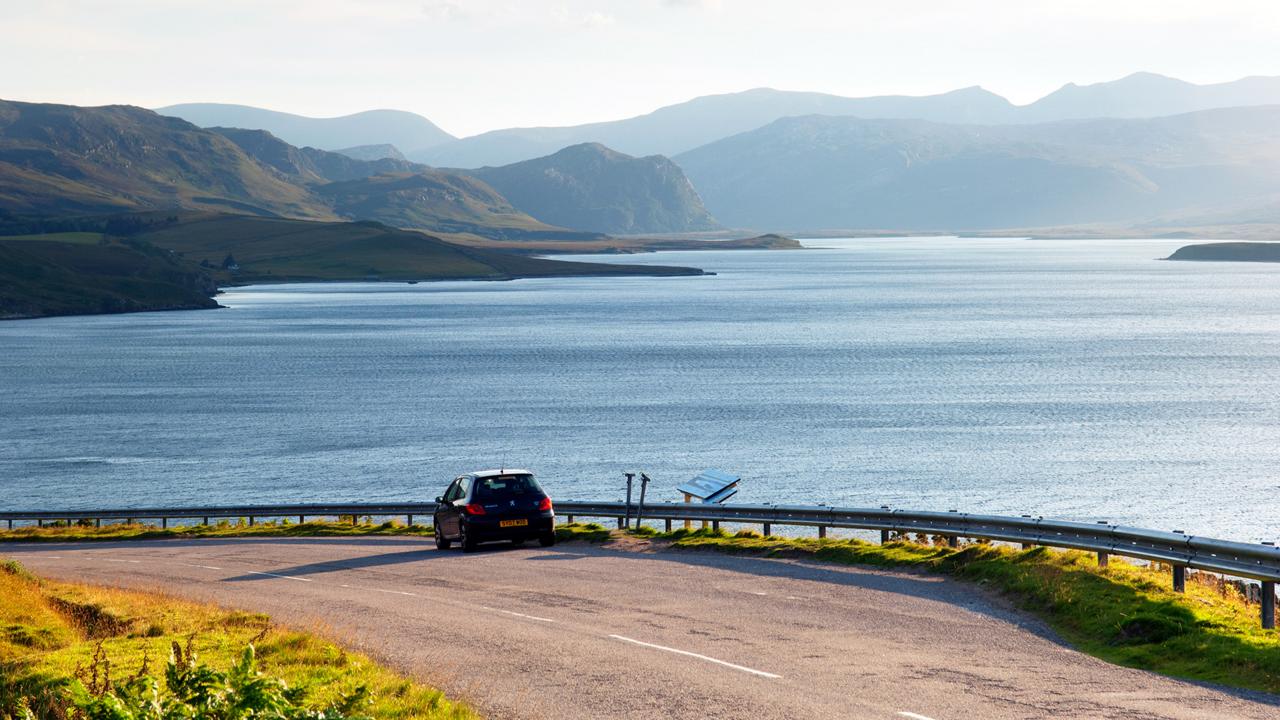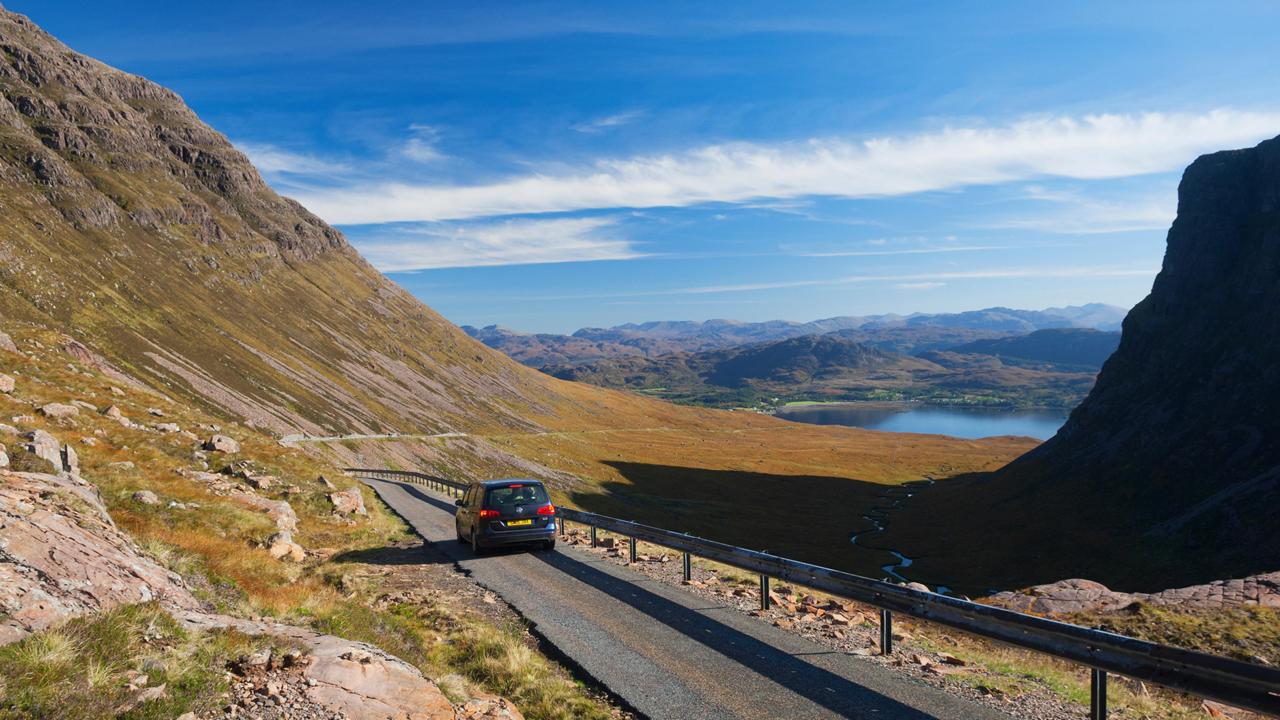Locals call it the “wee mad road”: a looping ribbon of asphalt that hugs the coastline between the fishing hamlets of Inverkirkaig, Coigach and Achiltibuie in the northwestern Scottish Highlands. “These single-track roads can take you to some wild places,” said Lesley Crosfield, the proprietor of nearby boutique hotel and restaurant The Albannach. “That’s why it’s always worth taking the slower road: there’s so much to learn around here.”
Crosfield runs Britain’s northernmost Michelin-starred restaurant, 85 miles northwest of Inverness. It’s exactly where she wanted to be. She first fell in love with Scotland’s northwest coast in the 1980s – and is now gearing up for more changes in the next year than she has seen in the past 25.

The view from Achiltibuie of Achnahaid Bay on Scotland’s northwest coast (Credit: Prisma Bildagentur AG/Alamy)
The road that runs right past her front door now forms part of the North Coast 500, launched last summer by the North Highland Initiative. Taking its cue from one of Scotland’s unofficial national anthems, (I’m Gonna Be) 500 Miles by The Proclaimers, the 516-mile itinerary climbs north from Inverness into the wild counties of Caithness and Sutherland, skirts the northern edge of the country, then drops south along the mountainous western coast. It runs past a sort of greatest hits of Scottish icons: spooky ruins, fairytale glens, toothy castles, rugged fairways and shingle-sand beaches. Not to mention whisky distilleries.
At first, the road winds through lands of corn, sheep farms and grain distilleries: quiet places where puffy sheep and cattle grids bring traffic to a standstill.

The North Coast 500 cuts past wild sand beaches, like this one near Cromarty on the northwest coast (Credit: Sham/Alamy)
But when turning west at the village of John O’Groats in Scotland’s northeast corner, zigzagging across the largest rolling expanse of peatland and blanket bog in Europe, the circuit turns up the Highland drama, looping past ancient lochs and the denuded glens of Ross and Cromarty. Here, it veers into remoter parts of the Highlands that only those with more fertile imaginations care to call home.

At the glens of Ross and Cromarty, shown here, the route turns up the Highland drama (Credit: Robertharding/Alamy)
Such risk-takers include people like Danish sculptor and ceramic artist Lotte Glob, who – between hiking trips into the wilderness – attracts buyers from across Europe to her studio. Or Paul Maden and James Findlay, who left Glasgow for Durness to found Cocoa Mountain, the UK’s northernmost chocolatier – now located in a Cold War station built in the mid-1950s to warn in the event of a nuclear attack.
“The traditional crofting life doesn’t tend to match up with espresso and artisan chocolates,” Maden said while boiling cream for a batch of single malt whisky caramel cappuccinos. “But business is booming.”
These are the kinds of success stories that the North Highland Initiative, which was inaugurated by Prince Charles to stoke interest in the area’s off-grid attractions, is aiming for.

A stop along the North Coast 500 at Loch Eriboll in northwest Scotland (Credit: Iain Sarjeant/North Highland Initiative)
Already reaping the benefits are Martin and Claire Murray, who began distilling Rock Rose gin in a copper still at the Dunnet Bay Distillers, eight miles northeast of the town of Thurso. Thurso is the improbable tip of another new Scottish touring route, the Scottish Gin Trail, launched in January by the Wine and Spirit Trade Association.
The botanicals used by the Murrays – 80 different kinds, at last count – have all been foraged and stocked from the surrounding wetlands with the help of local herbalist Brian Lamb. They include sea buckthorn, juniper, mint, hawthorn, bog myrtle and the Murrays’ signature ingredient, the flowering herb rhodiola rosea, which flourishes on brackish cliffs overlooking the North Sea.
To some extent, all of the historical romance of Scotland can be tied to this coast. At its halfway point sits the Cape Wrath Lighthouse, poised on the barren north-westerly corner of mainland Britain. Then there is Ardvreck Castle, a rectangular keep on Loch Assynt supposedly plagued by devilish mermaids. Pictish sculptures at the town of Portmahomack represent some of the great puzzles of medieval archaeology, while the holly-topped islands of Loch Maree shelter the remains of a forgotten graveyard and ancient druid hermitage.

The town of Thurso is now a stop on both the North Coast 500 and the Scottish Gin Trail (Credit: Will Newitt/Alamy)
Even Loch Maree, like Loch Ness, has its own fable as a refuge for the Muc-sheilch: a cross between an eel and a muckle-headed sea monster.
Given that the road could scarcely be more isolated, it’s surprising to find so much life off of it. Beyond the road is the territory of the majestic red deer, where stalkers’ paths weave through swathes of Scots pine and forest oak. Muscular stags can often be seen surveying the roadside from a rocky outcrop.

The mountain pass to Applecross, the end of the North Coast 500, in the Scottish Highlands (Credit: Iain Sarjeant/Alamy)
Near journey’s end, toward the town of Torridon on Scotland’s west coast, the mountains create a shoulder of castellated tiers in red and chocolate sandstone. The highest and most imposing is Liathach, its great terraced wall dwarfing Upper Loch Torridon and the crenelated towers of theTorridon Hotel. Starkly beautiful, when wrapped in mist, it sends out a beautiful, welcoming impression. If only the mountain could speak, it would tell even better stories.
This story is a part of BBC Britain – a series focused on exploring this extraordinary island, one story at a time. Readers outside of the UK can see every BBC Britain story by heading to the Britain homepage; you also can see our latest stories by following us on Facebook and Twitter.
If you liked this story, sign up for the weekly bbc.com features newsletter, called “If You Only Read 6 Things This Week”. A handpicked selection of stories from BBC Future, Earth, Culture, Capital, Travel and Autos, delivered to your inbox every Friday.
ADVERTISEMENT
Discover the home of amazing moments

We’ve searched the country high and low to bring you the very best Great Britain has to offer. Explore our site for yourself and discover the moments you’ll want to share. #OMGB. Great Britain. Home of Amazing Moments.
[“source -pcworld”]



